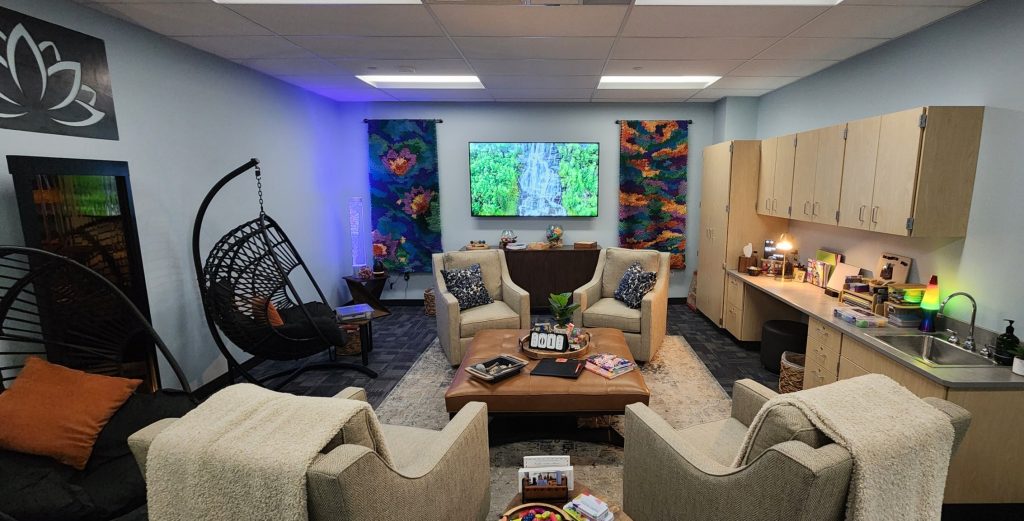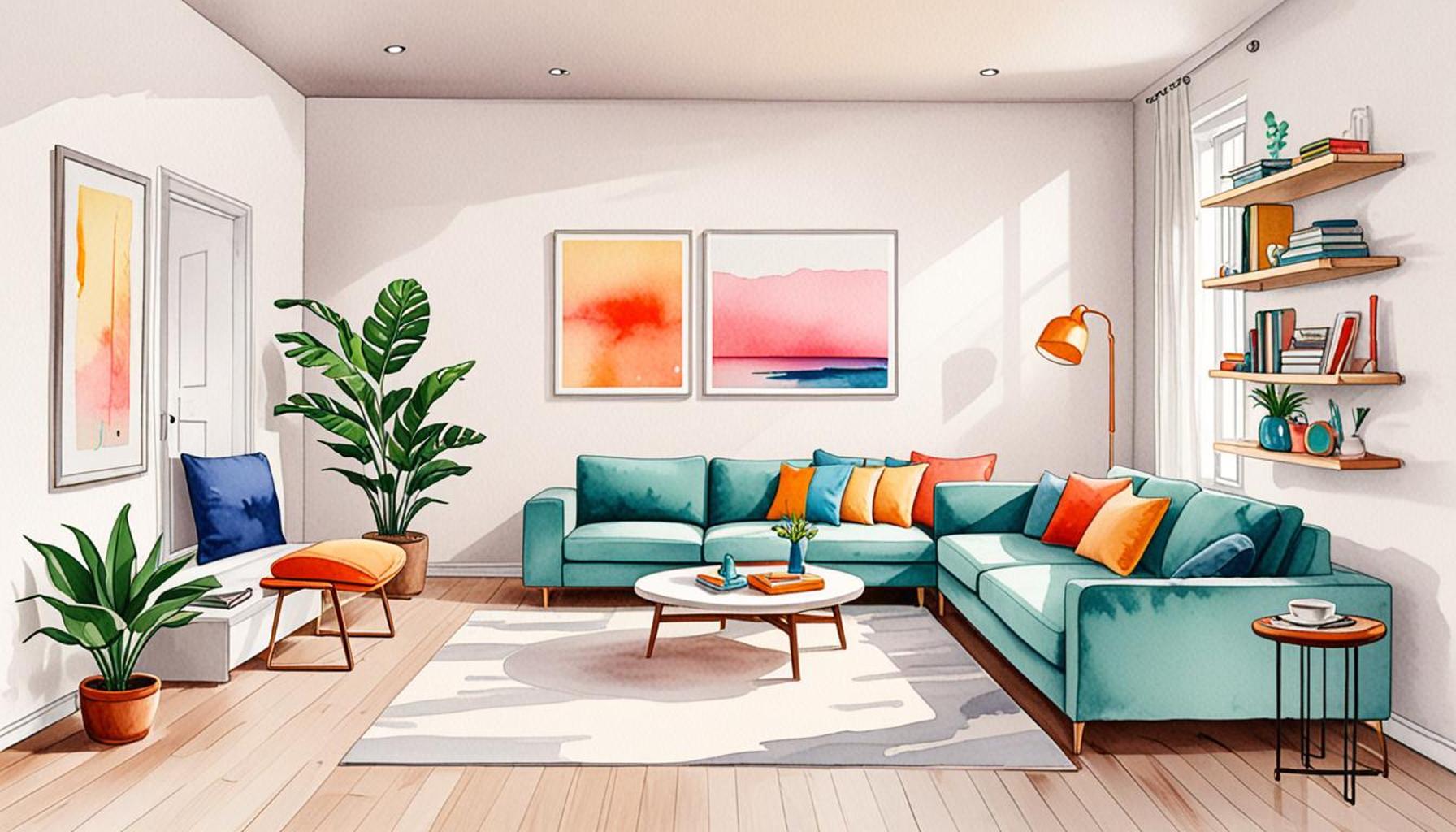The Impact of Space Optimization on Mental Health: Creating Calm and Organized Environments

The Significance of Thoughtful Space Design
Our surroundings inherently shape our experiences, influencing everything from daily productivity to emotional resilience. When we prioritize space optimization, we foster environments that cultivate calmness and enhance organization. The resulting tranquility not only promotes mental clarity but can also lead to substantial improvements in mental health and overall quality of life.
Understanding Space Optimization
Space optimization encompasses the strategic arrangement of physical environments to maximize functionality and accessibility. This thoughtful design process involves several crucial components:
- Decluttering: Removing unnecessary items from our lives can create a sense of freedom and tranquility. For example, it has been shown that even a small workspace can become a source of stress if cluttered. Setting aside just a few minutes each day to organize and eliminate items can lead to a more serene atmosphere.
- Effective Layout: The arrangement of furniture and objects directly impacts our mood. Consider an office layout designed to encourage collaboration and creativity; open spaces interspersed with quiet areas can reduce stress and significantly improve productivity by catering to various working styles.
- Natural Light: Incorporating natural light into spaces not only boosts mood but also enhances energy levels. Offices with large windows and access to outdoor views can help employees feel more motivated and engaged, especially considering studies that link increased exposure to daylight with improved cognitive function.
The Connection to Mental Health
The correlation between our physical surroundings and mental health is well-documented. A well-organized and thoughtfully designed space can lead to:
- Reduced Anxiety: An organized environment minimizes feelings of overwhelm and chaos. For instance, research reveals that students studying in tidy classrooms often exhibit lower stress levels compared to those in cluttered settings.
- Enhanced Focus: Clear and uncluttered spaces facilitate improved concentration and creativity. In fact, many productivity experts recommend implementing minimalist design principles in workspaces to enhance mental agility and creativity.
- Better Mood Regulation: Calm, soothing environments contribute to emotional stability. Spaces adorned with soft colors, comfortable seating, and plants can serve as sanctuaries, effectively alleviating feelings of stress and promoting joy.
Exploring the impact of space optimization invites us to consider how we can design our surroundings to not only be aesthetically pleasing but also sensitive to our psychological needs. This exploration into the intersection of design and mental health unravels a wealth of simple yet powerful strategies that can yield significant emotional and psychological benefits. Whether through enhancing our home offices or reimagining our living spaces, the importance of thoughtful design can resonate deeply, transforming how we experience our day-to-day lives.

DISCOVER MORE: Click here for valuable insights
Designing Spaces for Serenity
Realizing the profound impact of our environments on mental health invites a deeper investigation into how space optimization can serve as a powerful tool for enhancing well-being. When we consciously design our spaces, we create opportunities for positive change, transforming chaos into order and fostering a serene atmosphere that promotes mental clarity. Studies have consistently shown that a thoughtfully designed environment can play a pivotal role in emotional balance and stress reduction.
The Role of Color in Space Optimization
The use of color in our surroundings can have far-reaching effects on our moods and emotions. Specific hues have been linked with particular psychological responses:
- Blue: Often regarded as a calming color, blue can reduce feelings of stress and anxiety. It’s frequently used in spaces aimed at relaxation, making it an excellent choice for bedrooms or meditation areas.
- Green: Associated with nature, green promotes a sense of harmony and restoration. Incorporating greenery, whether through decor or living plants, can significantly elevate one’s mood and create a refreshing, revitalizing effect.
- Yellow: This bright color is known to evoke feelings of happiness and energy. Strategic placements of yellow accents in kitchens or workspaces might enhance creativity while boosting overall positivity.
By leveraging color psychology within our designed spaces, we can lay the groundwork for enhanced emotional well-being, illustrating the critical relationship between color and mental health.
The Importance of Personalization
Another vital aspect of space optimization is the personalization of environments. Individuals should be encouraged to tailor their spaces according to their personal preferences, which fosters a sense of ownership and comfort. Personalization can include:
- Displaying Meaningful Artwork: Art that resonates with personal experiences or cultural backgrounds can provide inspiration and emotional stability.
- Incorporating Personal Touches: Items such as family photographs, souvenirs from travels, or cherished trinkets contribute to a sense of belonging, creating an environment where one feels at ease.
- Creating Functional Zones: Designating specific areas for different activities—like a cozy reading corner or a well-equipped workspace—can help structure daily routines, thereby reducing feelings of confusion or clutter.
In essence, the way we personalize our environments actively influences our emotional responses and promotes a sense of peace and security that is essential for mental health.
Integrating Mindfulness into Space Design
Finally, integrating mindfulness into space design further amplifies the mental health benefits of optimized spaces. Mindfulness practices, when combined with thoughtful design, help create environments that encourage reflection and serenity. Elements like tranquil water features, soft textures, and areas that promote stillness can facilitate a mindful atmosphere, allowing individuals to unwind and recharge.
Ultimately, the impact of space optimization on mental health cannot be overstated. By paying close attention to design elements—from colors and personalized touches to mindfulness practices—we can enhance our well-being and create calm, organized environments that uplift our spirits. As we continue to explore and embrace the intersection of space and mental health, it becomes evident that these strategies offer simple yet effective methods to enrich our everyday lives.
The Psychological Benefits of Space Optimization
Space optimization transcends mere aesthetics; it significantly affects our mental health. By creating organized environments, individuals often experience reduced anxiety and improved focus. Cluttered spaces can lead to heightened stress levels, while calm, orderly environments facilitate a sense of control and peace. The arrangement of physical space can influence our psychological wellbeing, making it essential to understand how smart design choices can foster a healthier mindset.
Practical Strategies for Space Optimization
One effective approach to optimize space involves the use of multifunctional furniture. Consider a sofa that doubles as storage, or a coffee table that can be transformed into a dining table when in need. Such versatility not only maximizes space but also minimizes clutter, directly impacting mental clarity. Similarly, incorporating natural elements, such as plants and natural light, can enhance mood and productivity. Research indicates that environments filled with nature can evoke a sense of tranquility and satisfaction.
Organization Techniques to Enhance Mental Clarity
Implementing organizational techniques like the KonMari method helps individuals declutter and organize their belongings purposefully. By involving emotional attachment to items, this method encourages a mindfulness approach to organization, fostering emotional health. Additionally, establishing a routine for maintaining order can further enhance a sense of stability in one’s life, allowing individuals to thrive in harmonious surroundings.
| Advantages | Details |
|---|---|
| Reduces Stress | Organized environments can lower cortisol levels and promote relaxation. |
| Boosts Productivity | Clutter-free spaces enhance focus, allowing for better concentration and efficiency. |
| Enhances Mood | A well-structured space can uplift one’s spirits and create a positive atmosphere. |
| Encourages Mindfulness | Organizing one’s space encourages reflection and promotes a mindful approach to life. |
DON’T MISS: Click here for a step-by-step guide
The Power of Natural Light and Ventilation
One of the most significant yet often underappreciated aspects of space optimization is the integration of natural light and proper ventilation into our environments. Research indicates that exposure to natural light not only enhances mood but also aids in regulating our circadian rhythms, which are crucial for maintaining overall mental health. In fact, a study published in the Journal of Clinical Sleep Medicine found that increased exposure to natural light during the day improves sleep quality at night. This, in turn, leads to better cognitive function and a reduction in depressive symptoms.
When designing spaces, maximizing windows and utilizing transparent materials can allow light to flood in, creating vibrant and welcoming areas. In addition, strategically placed mirrors can help bounce light around the space, enlarging the environment visually while simultaneously lifting the ambiance. Incorporating a layout that encourages airflow is equally essential. Good ventilation not only maintains air quality but also reduces the risk of a stuffy atmosphere that can lead to fatigue and irritability.
Choosing the Right Furniture
The selection and arrangement of furniture within a chosen space play a considerable role in optimizing it for mental well-being. Cluttered or mismatched furniture can lead to visual chaos, potentially heightening feelings of anxiety. On the other hand, minimalist designs and functional furniture can promote clarity and mental organization. For instance, opting for open shelving can foster a sense of accessibility and encourage a more organized environment. With fewer items obstructing views and pathways, individuals can feel more at ease and focused.
Ergonomics should also be taken into account when selecting furniture. Chairs and desks that support healthy posture can diminish physical stress and discomfort, leading to a more enjoyable, productive experience. Furthermore, incorporating flexible furniture solutions, such as adjustable desks or movable seating, can adapt to different tasks and activities, catering to a dynamic lifestyle. The right furniture choices can significantly enhance both functionality and tranquility in a space.
Incorporating Technology Wisely
Technology has become an integral part of our everyday lives, but it can also contribute to mental clutter if not managed appropriately. The intelligent use of technology in space optimization can mitigate negative effects on mental health while enhancing a sense of organization. Smart homes equipped with automated lighting and climate control systems can provide personalized comfort while reducing stress related to temperature and lighting discrepancies.
- Voice-Controlled Systems: These can help control various elements of a home, allowing individuals to manage their environments effortlessly, thus reducing the cognitive load.
- Task Management Apps: Utilizing organizational apps on smartphones can help streamline daily activities, decluttering the mind and enhancing productivity.
- Virtual Reality: This technology can create calming experiences, such as guided meditations set in tranquil landscapes, fostering relaxation and mental rejuvenation.
While technology can contribute to distraction and overwhelm, when applied with intention, it can assist in creating a more organized and peaceful space that nurtures mental health.
DISCOVER MORE: Click here to unlock the secrets of mindful living
Conclusion
In today’s fast-paced society, the significance of space optimization in fostering a healthy mental environment cannot be overstated. From the strategic use of natural light to the thoughtful selection of ergonomic furniture, each element plays a pivotal role in shaping our emotional well-being. The benefits of well-organized spaces are manifold, promoting clarity, reducing stress, and enhancing overall productivity. Research has consistently demonstrated that environments rich in light and airflow not only uplift our mood but also facilitate better cognitive functioning, ultimately contributing to a healthier lifestyle.
Moreover, by integrating technology with purpose—be it through smart home systems, task management apps, or virtual wellness experiences—we can create personalized environments that cater to our unique needs. This conscious approach to designing our spaces can significantly minimize mental clutter and enhance tranquility, offering a respite from the chaos of daily life.
As we deepen our understanding of how our surroundings impact our mental health, it becomes clear that investing time and resources into creating organized, calm environments is not just beneficial, but essential. Whether it’s a cozy corner in your home that invites relaxation or a workspace designed for focus, the potential for positive change lies in the choices we make about our spaces. Thus, embracing these principles of space optimization can open the door to a more serene and balanced way of living, promoting mental health, productivity, and happiness in our everyday lives.



